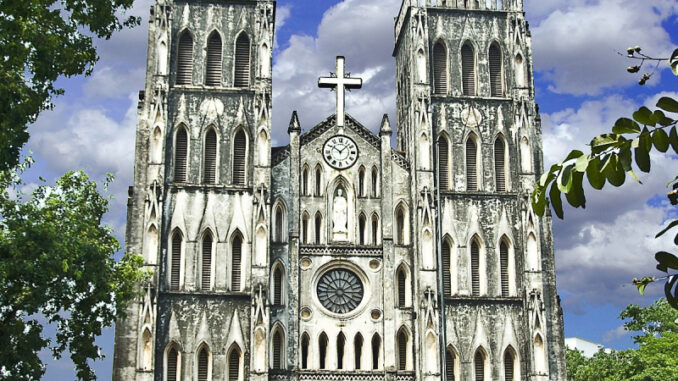
Hanoi, the thousand-year-old cultural capital of Vietnam with hundreds of relics from the founding of the country. You want to travel with friends to places in Hanoi. But you still wonder which is the most beautiful and famous place to go. If you are planning to visit the capital, let’s check out the top list of places to check in when coming here.
Hoan Kiem Lake – Sword Lake
Hoan Kiem Lake is one of the landmarks of Hanoi Capital, this is a relic with a thousand-year history of civilization. Hoan Kiem Lake, also known as Sword Lake, is called “Flower basket in the heart of the city” by foreign tourists. This place is not only a place to enjoy the wind and walk around with many flowers, ornamental plants, towers, turtles, … but this place is also associated with the life activities of the people of the Capital.
Around the lake, there are many flowers and ornamental plants that bring a cool feeling close to nature. Hoan Kiem Lake is not only a resting place after a long journey of wandering, tourists coming here can also feel the daily life of the people of the capital. Visitors will have to admire the shy beauty of the radiant purple mausoleum trees, burning red phoenix trees.

Ba Dinh square
Ba Dinh Square is one of the beautiful tourist attractions in Hanoi. Besides, Ba Dinh Square is also a historical page recording great changes in the nation. Ba Dinh Square was built by the French in the early 20th century with the name Puginier – the name of a French priest. The name Ba Dinh also appeared before September 2, 1945.
Ba Dinh Square is not only a historical witness but also an indispensable sightseeing place in Hanoi tours. Ba Dinh Square is a unique architectural complex. Over time with the ups and downs of history, Ba Dinh Square has the current spatial architecture. Therefore, it can be said that Ba Dinh Square is an extremely interesting tourist attraction cluster of Hanoi capital.
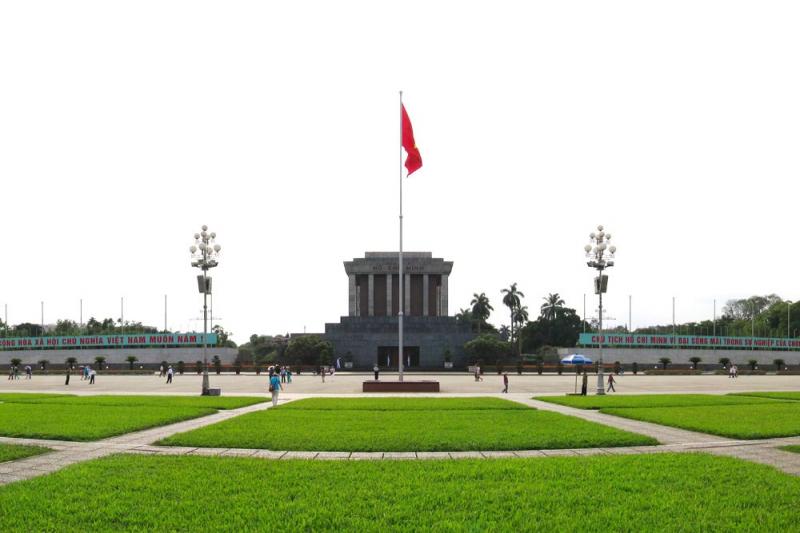
Ho Chi Minh Mausoleum
Ho Chi Minh Mausoleum was inaugurated on August 29, 1975. The mausoleum consists of 3 layers with a height of 21.6 meters, the lower layer is shaped like a three-step staircase, the middle layer is the central structure of the mausoleum including the examination room. comedy and the corridors, the stairs up and down. Around the four sides are rows of square columns of granite, the top layer is the roof of a triangular mausoleum. On the main side is the inscription: “President Ho Chi Minh” in pink plum color.
Ho Chi Minh Mausoleum is a great cultural and artistic work. The mausoleum was built on the old foundation of the platform in the middle of Ba Dinh Square, where Ho Chi Minh presided over large rallies and read the Declaration of Independence giving birth to the Democratic Republic of Vietnam. The mausoleum was officially started construction on September 2, 1973.
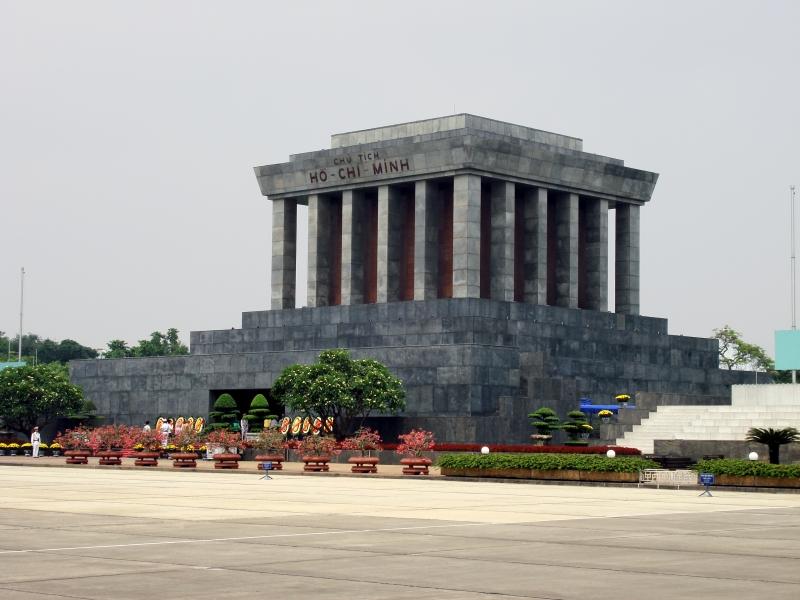
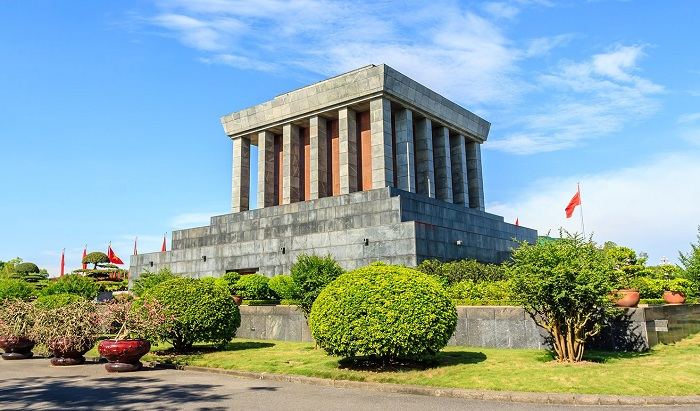
St. Joseph’s Cathedral, Hanoi
Considered one of the symbols of Hanoi, Hanoi Cathedral is a must-see destination in many tourists’ exploration of the capital. In particular, coming to Hanoi Cathedral at the sacred Mass, visitors will have many unforgettable experiences. Hanoi Cathedral is considered the oldest church in the Hanoi capital. Not only is it a regular place for religious activities of parishioners of the Archdiocese of Hanoi, but Hanoi Cathedral is also a famous tourist attraction in Hanoi, attracting a large number of domestic and foreign tourists. visiting country. The architecture of Hanoi Cathedral
designed in the European medieval Gothic style. This is considered a model architecture of the church, very popular in the Renaissance period. Besides participating in Masses, visitors can also visit Hanoi Cathedral. This place is considered as one of the beautiful tourist destinations in Hanoi, possessing extremely unique and impressive architecture.
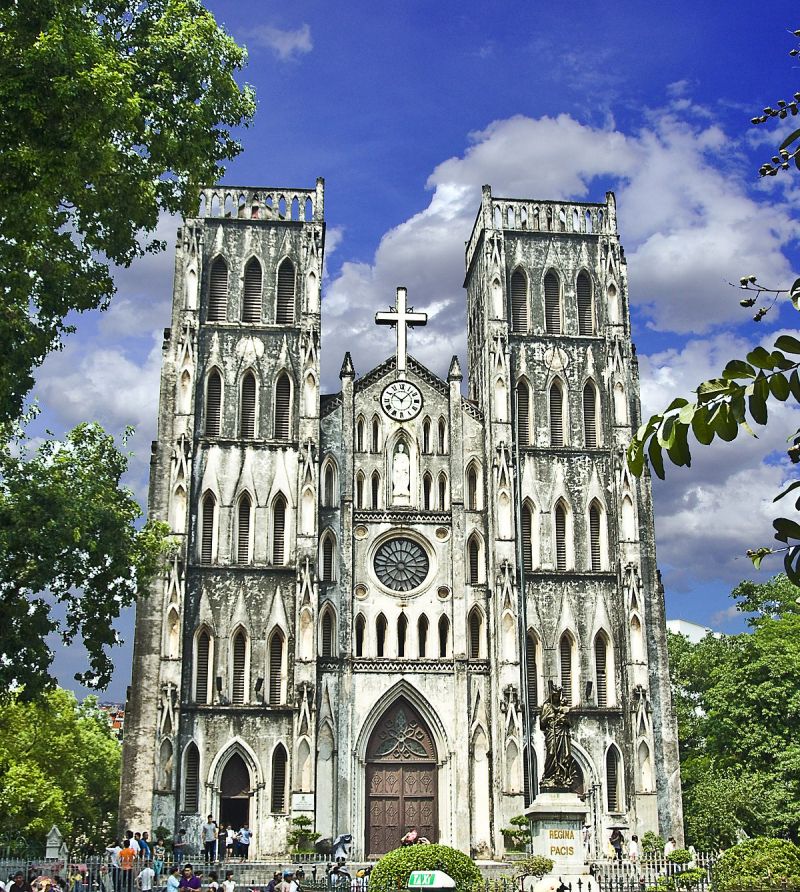
West Lake
West Lake is the most romantic corner in the multi-color painting of Hanoi; is the world of clear breezes, liberal and poetic. West Lake is beautiful not only because of the immense blue water surface, not only the purple color of the mausoleum, the red phoenix petals every summer, the sadness of space, the weeping willows in the winter afternoons, the shimmer of nature. The morning is pure… but West Lake is still beautiful because it is like a heart embracing the sad and happy states of so many people.
West Lake is a relaxing destination for Hanoians and also an ideal place for foreigners living and working in Ha Thanh, with hundreds of Western villas. More than ten years ago, people only went to the West of West Lake to enter flower villages, peach villages, to go to pagodas, to go to Tay Ho palace…, in recent years, families have been racing to open restaurants. gradually became a food court with a lyrical landscape for those who want to “change the wind” after tiring working hours.

Ancient city of Hanoi
Hanoi Old Quarter is located to the west and north of Hoan Kiem Lake, chosen by many tourists with the intention of learning about the life, culture, and people of Trang An. Not only help you better understand Hanoi life, but this place is also a great virtual living coordinate with vintage-style photos. In general, the roads and alleys are quite small, so to travel in the city, you can choose to take an electric car, rent a motorbike, or cycle.
The old town is a densely populated place with 36 streets. This place was formed by small traders and craftsmen by the Red River wharf. They gathered to form a busy and bustling shopping street. Each street here mainly focuses on selling a certain type of item. Because of the above reasons, tourists should not ignore the old town – one of the most interesting and attractive tourist destinations in Hanoi.
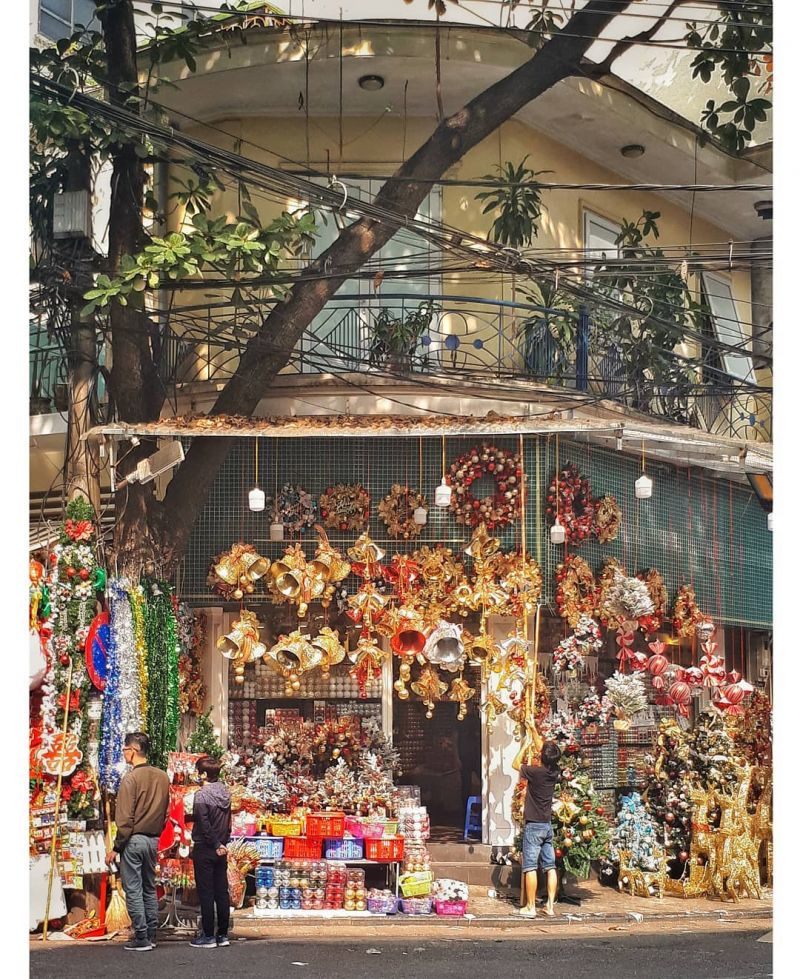
Quoc Tu Giam Temple
Temple of Literature is a place that cannot fail to mention when introducing Hanoi. With a long history, the Temple of Literature has become a stopover attracting domestic and foreign tourists. Right from the moment you step foot here, you will feel the scenery, the architecture is tinged with old colors but full of beauty of time.
This is a leading cultural and architectural complex and is the pride of the people of the capital. People often refer to the Temple of Literature when referring to the thousand-year-old tradition of Thang Long – Dong Do – Hanoi. Ancient architecture brings us back to the old nostalgia of the country. Not stopping there, this place is also considered a symbol of Vietnamese knowledge and education. This is a place to worship the saints, ancestors of Confucianism and Quoc Tu Giam Chu Van An – a typical teacher of high morals and dignity of Vietnamese education.
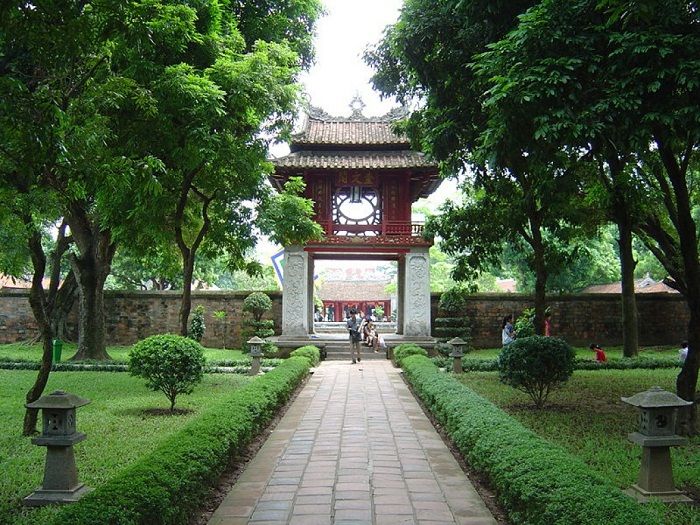
Tran Quoc Pagoda
The next name that Vinlove would like to introduce to you is Tran Quoc Pagoda. This is one of the oldest pagodas in Hanoi and Vietnam. Tran Quoc Pagoda is located on a peninsula south of West Lake, near the end of Thanh Nien Street, Ba Dinh District, Hanoi. With historical and architectural values, Tran Quoc Pagoda is famous as a sacred Buddha’s door, attracting many Buddhist followers, visitors, domestic and foreign tourists.
The temple harmoniously combines the ancient majesty and the poetic and politeness of the verdant garden and the immense lake full of love poetry. Immersed in the quiet picture of Tran Quoc Pagoda , tourists also have the opportunity to explore the architectural art on the carvings. Every year, Tran Quoc Pagoda is still chosen as a place for important events related to Buddhism, a place of worship for millions of devotees and attracts tourists from all over the world who are cherishing a wish to visit once. admire the beauty of the time of the ancient temple in Hanoi city.

One Pillar Pagoda
One Pillar Pagoda is one of the symbols of the Hanoi capital. The pagoda was built in 1049 during the Ly dynasty. One Pillar Pagoda is a unique architectural work with high aesthetics, which is expressed through visual arts on the water surface, sculpture, painting, etc., reflecting ancient cultural values as well as national character. On the other hand, One Pillar Pagoda also contains many respectable spiritual values.
Until now, this place is still the destination of many people because the quiet and peaceful space makes people like to let go of all anger and delusion when going through the door to the meditation door. Through the ups and downs of time, One Pillar Pagoda is still located majestically, bringing a peaceful but ancient feature in the heart of bustling Hanoi. Every year, the temple attracts a lot of Buddhists from all over the world, domestic and foreign tourists come to offer incense, worship Buddha as well as visit the temple.
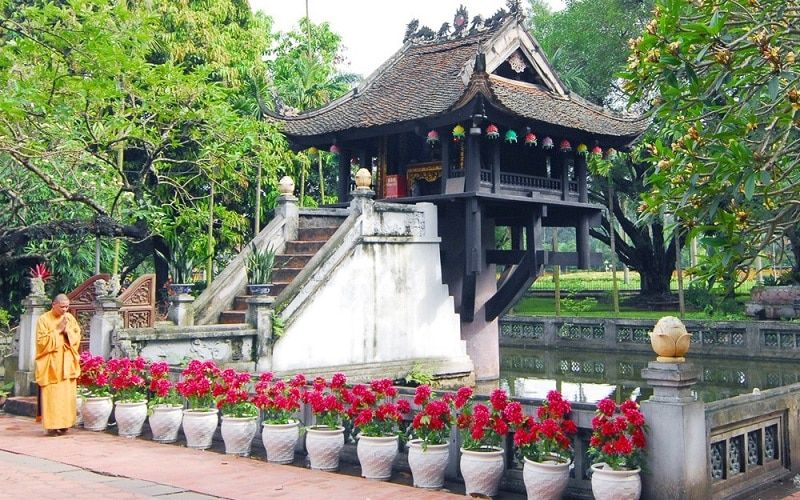
Long Bien Bridge
Long Bien Bridge is also an indispensable place when it comes to Ha Thanh tourism. The bridge was built by France in 1898, is the first steel bridge to cross the Red River. Together with the people of Hanoi, who experienced two resistance wars against the French and the Americans, this bridge is considered a symbol of Hanoi during its difficult years. In the hearts of many Hanoians, the Long Bien Bridge is an indelible memory.
Tourists often check in on the bridge, in addition, you can also see Long Bien Bridge from nearby cafes. Watching the flow of people on the bridge from a different perspective will give you many interesting experiences. For more than half a century, the Long Bien bridge in Hanoi across the Red River is not only a great historical witness but also a familiar “meeting point” in the bustling city.

Opera House
Hanoi Opera House is located at 01 Trang Tien, Phan Chu Trinh, Hoan Kiem district. This place is proud to be the place to organize cultural and artistic activities to serve important social and political tasks. After more than 100 years of establishment and development, the Opera House still surprises visitors with its unique European architecture in the heart of Asia. Right from the outside of the theater, we can feel the “breath” of Europe with delicate textures, carved classical patterns.
Here, you will also have more interesting views about the history and lifestyle of the old colonial society. In particular, not only has great architecture, the Opera House also makes you immersed in luxurious and romantic music space. Visitors can visit the Hanoi Opera House for a fee of 400,000 VND/person.
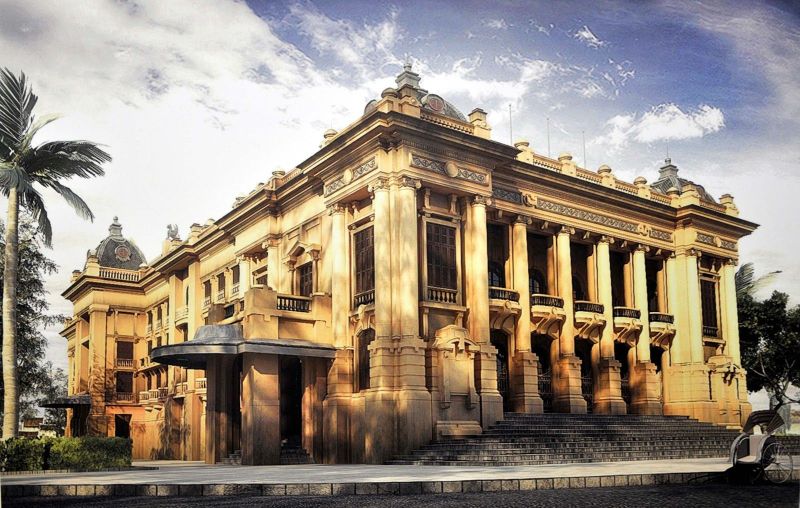
Imperial Citadel of Thang Long
Along with the above places, Thang Long Imperial Citadel is also a stopover listed in many annual tours. Thang Long Imperial Citadel is a complex of massive architectural works built by kings in many historical periods and has become the most important relic in the system of Vietnamese monuments.
The Imperial Citadel of Thang Long has a total area of 18,395 hectares, tourists will have a hard time exploring the entire Imperial Citadel . Places to visit in Thang Long Imperial Citadel: Archaeological Site 18 Hoang Dieu, Hanoi Flag Tower, Kinh Thien Palace, Hau Lau, Cua Bac, House D67. Visitors can visit the Imperial Citadel of Thang Long at any time of the year, in which, autumn will be the wisest choice because at this time the sky is clear and the sun is not too bright.
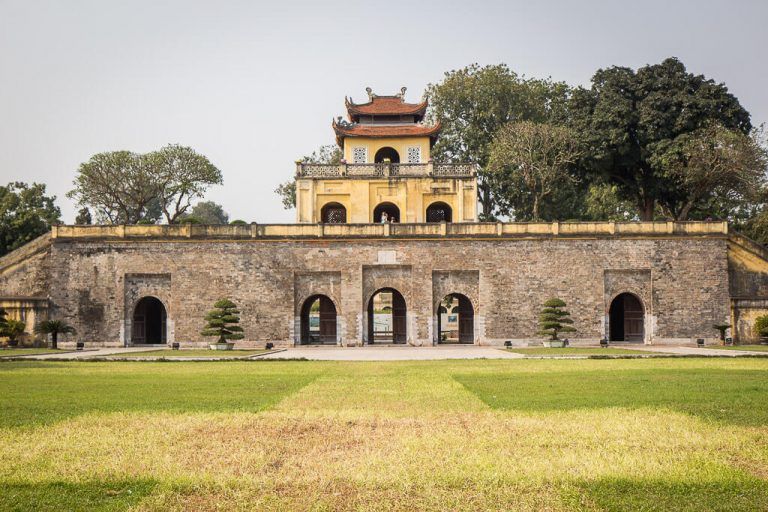
https://www.youtube.com/embed/2r3zg22HwUwImperial Citadel of Thang Long
The places mentioned above are just 5 of the must-visit tourist destinations when visiting Hanoi. If the trip is long, you can visit other impressive places of the capital to fully feel the ancient breath of this place.
